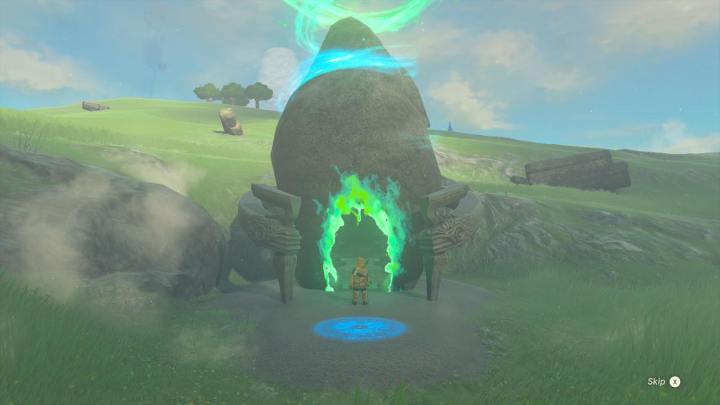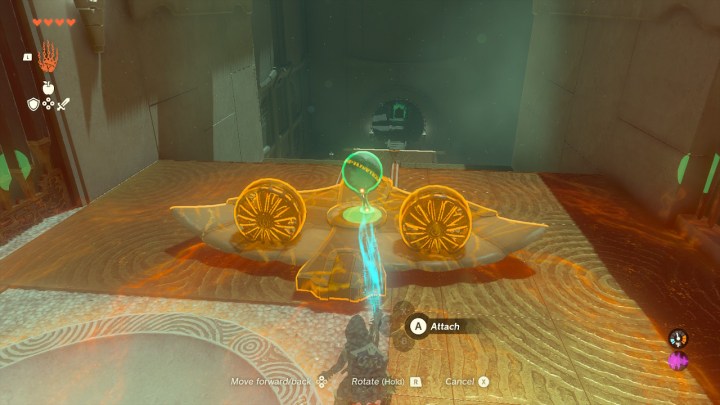As a puzzle game fan, my favorite part of The Legend of Zelda: Breath of the Wild is its shrines. These mini-dungeons often act as ingenious little puzzle chambers that test my understanding of the game’s abilities and physics. I was thrilled when I loaded up The Legend of Zelda: Tears of the Kingdom and immediately found that the development team kept that idea intact for the sequel. I’d have over 150 new shrines to hunt down, including a handful that were unlocked via navigation puzzles in the open world.
It’s not just the fact that shrines return, though, that got me excited; it’s the fact that they’re even better this time around. That’s thanks in large part to how they interact with the sequel’s crafting systems, serving a larger purpose beyond giving Link some scattered challenges to solve.
Driving permit exams
Tears of the Kingdom’s shrines aren’t much different from Breath of the Wild’s on paper. Each one functions like a Portal test chamber built around a specific gameplay mechanic or theme. One has players solving puzzles using buoyancy physics, while another has them ascending their way to the top of a rotating cube. Even combat-focused shrines have specific gimmicks this time, testing players’ mastery of specific item fusions or environmental interactions.

One big difference, though, is that shrines don’t always have one set solution. That’s thanks to Tears of the Kingdom’s powerful crafting systems, which allow Link to create inventive solutions to problems. In one shrine, I had to get a ball across a river on a boat, but the current was working against me. Rather than trying to figure out the intended solution, I decided to create my own. I fused every plank of wood I could find together and attached the ball to the end of it. That would allow me to raise it to an upper level I could climb to via ladder and walk it across the waterway. In another puzzle, I simply placed a ball on the edge of a platform and ascended through it. I have no idea what I was supposed to do, but that didn’t stop me from claiming my blessing of light.
This isn’t a bug or an oversight; it’s exactly what Tears of the Kingdom wants you to do. The entire game challenges players to outsmart the developers, creating ingenious solutions to their puzzles. Whenever I pull off a clearly unintended trick, it makes me feel like the world’s greatest engineering genius. That sensation isn’t just in shrines either. It’s present anytime I break into a Moblin base with a makeshift airship or whenever I grind my way over a rail by strapping a minecart to my shield.
That’s enough on its own to improve the shrine formula, but there’s something that impresses me even more: Every single shrine in Tears of the Kingdom is secretly a tutorial.

In each one, Link learns something new about his abilities or how Zonai devices work that have a practical application in the open world. Some teach him how to create specific vehicles like hot air balloons and use them to transport items safely. Others show him how to create makeshift contraptions like slingshots that can toss items (or Koroks). If Breath of the Wild’s puzzles were like pop quizzes about his abilities, Tears of the Kingdom’s act more like a driving permit exam. They’re a starting point, not a final test.
While I only have a few more shrines to complete in Tears of the Kingdom, I don’t feel like I’m running out of those satisfying puzzle moments. Instead, they’ve allowed me to turn Hyrule itself into one gigantic shrine that I can solve using that wealth of knowledge I’ve amassed. With 100 hours logged in my file, the training wheels are finally off and my true test can begin.
The Legend of Zelda: Tears of the Kingdom is out now on Nintendo Switch.
Editors' Recommendations
- This beloved feature almost ruined Zelda: Tears of the Kingdom
- If you can’t get enough Palworld, try these great games next
- Our favorite Switch games of 2023: Tears of the Kingdom, Mario, and much more
- The 10 best video games of 2023
- The Game Awards 2023: Here’s the complete list of winners




